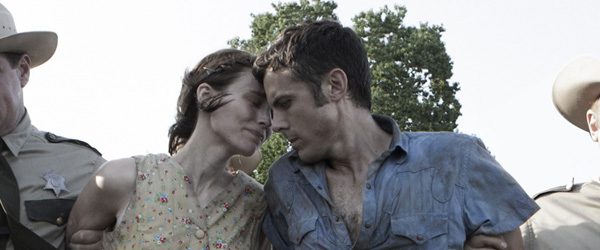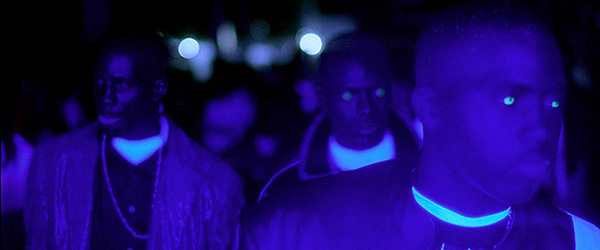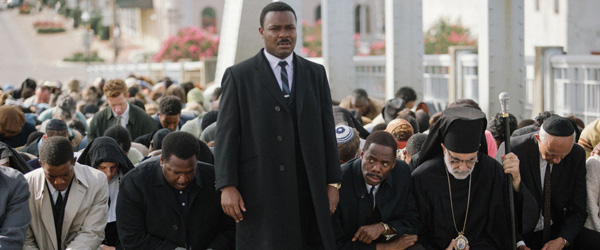Bradford Young, Christian Epps and the Importance of Making Images with Meaning
For nearly a generation, Project Involve has been Film Independent’s flagship mentorship and diversity program, providing tangible support and craft and career advice to up-and-coming (and, sadly, underrepresented) voices in independent film.
Beginning 23 years ago with an inaugural class that included producer (and current Film Independent Board Member) Effie Brown and current LA Film Festival Director Stephanie Allain onboard as a mentor, today PI has become one of the indie film world’s premiere incubators for producers, writers, directors, cinematographers, editors, festival programmers and industry executives.
Each year the program becomes more competitive, but one thing remains the same: the mission to cultivate unique and underrepresented voices.
On January 7, Project Involve invited cinematographer Bradford Young, ASC and gaffer/lighting designer Christian Epps to the Film Independent offices in Los Angeles for an intimate conversation with the 2016 class of Project Involve Fellows.
Moderated by Stephanie Allain, the conversation wound its way through several topics surrounding the process and philosophy of making images to tell stories.
On Meaning: Creation and Implication
Allain began the conversation with Young and Epps by reading a quote from Jazz Age photographer Roy DeCarava:
“A photograph is a photograph; a picture, an image, an illusion complete within itself, depending neither on words, reproductive processes or anything else for its life, its reason for being.”
“Do you agree with that? What is a photograph to you?” she asked.
After absorbing the question, Young sat back in his chair and answered simply, “Yes, absolutely.”
It was the perfect opening for discussion of the cinematographer as thoughtful image-maker—a distinct artist-craftsman who takes into account the social and moral implication of each of their creations and the meaning behind them.
On Influences: The Art of Intentionality
Young and Epps are alums of Howard University, which in recent years has become a hotbed for filmmakers whose work with lighting, lenses, camera movement, film stocks and visual textures, exerts a profound influence on contemporary cinematic grammar.
It was from this vibrant beginning that Young and Epps emerged, eventually collaborating on numerous films including Ava DuVernay’s Middle of Nowhere and Selma and David Lowery’s Ain’t Them Bodies Saints. Young even studied under award-winning filmmaker and longtime Howard professor Haile Gerima, whose work influenced him deeply.
Even more interesting was how Young’s journey to becoming an image-maker owed a debt to the aesthetics of his grandparents’ funeral parlor. Fellow cinematographer Johnny Simmons (Dark Girls, Asunder, Once Upon A Time…, When We Were Colored)—another one of Young and Epps’ mentors who was also in attendance—shared a story Young once told him about watching his grandmother turn off a light, walk across the room and turn on another. In this moment, Young recognized his Grandmother’s simple lighting design as intentional.
Young also explained his technique for prepping a film, which involves choosing a photographer or painter who best represents the style of film he and the director wish to emulate. He then creates a grid with images in each box so he can track the visual theme and be aware of when changes occur. This allows Young to visualize how different images in a film can be in conversation with each another. He then plasters the production office from floor to ceiling with the images from his grid so every department can use them as reference and get on the same page.
Young describes his decision to hire Epps, whose career as lighting designer spans three decades and ranges from live theatre to films including Clockers, Girl 6 and Belly, for Ain’t Them Bodies Saints as a no-brainer.
“I knew I had to work with the gaffer who did Belly,” he said. Over the years, Epps and Young have not only established a fruitful working relationship behind the camera, but have become good friends as well.
On Process: We Light Spaces, Not Faces
“I’m not interested in broad strokes. Just in our day-to-day existence society puts a lot of broad strokes on us anyway—‘this is who black people are.’ It’s very easy to marginalize us if you generalize,” said Young of his experience as an African-American filmmaker.
Young’s work proves that he’s not afraid of darkness. Oscar Isaac once even referred to him as a “light alchemist.” For Young, lighting isn’t always about illumination, but also allowing things to not be seen, as his characters often find themselves moving through shadows and spaces with single light sources.
Epps and Young also discussed their love of top lighting, which allows them to stay out of the way. As an example, the welcome scene from Selma, in which multiple characters of equal importance move throughout the space introducing themselves to the audience and asserting themselves as an integral part of the story.
Young spoke more specifically about photographing Ain’t Them Bodies Saints, which was shot on film. When Young worried that they weren’t exposing the film enough, Epps was there to reassure him that their techniques would work. Epps had done the film tests and made sure that the proper filters were in front of lens at the start of every shoot day—a testament to their close working relationship.
“He’s not someone who just turns on a light and walks away,” said Young of Epps, appreciatively.
On Mentorship: It Goes Both Ways
For Epps and Young, mentorship is about inspiration. The artists who inspired them mentored each, and in turn they each inspired those artists.
Ideally, a mentor is someone who’s unaware of the act of mentoring—not as something you do, but what you simply are. And as Project Involve proves, the best kind of mentor-mentee relationships are when a young, emerging filmmaker manages to inspire those people who they look up to.
On Choosing Projects: The Power of No
On the subject of choosing projects, Epps explained that saying “yes” is often harder than saying “no,” but insisted on the importance of keeping your eyes on where you want to go and the kind of films you want to make. Saying “no” to opportunities that aren’t in line with your vision can help you reach your career goals faster.
Young stated that when a filmmaker hires him it means they know he’s coming with baggage: a distinct, artistic point of view and unique cultural perspective he isn’t willing to negotiate.
For Epps and Young, their bodies of work are a reflection of themselves—work they hope will make the younger generation of filmmakers coming up behind them proud.
The key question left lingering at the conclusion of the evening was a deceptively simple one: what images do you want to leave behind?
To learn more about Film Independent’s Project Involve, click here. To support our Fellows’ short film production fund, click here.
To learn more about Film Independent or to become a Member, please visit our website.
Angel Kristi Williams / Film Independent Artist Development


